Futuremark 3DMark Vantage – The Gamers New Benchmark
Physics Testing – Agiea PhysX Cards Do Matter
3DMark Vantage includes a physics test that features a heavy workload of future generation game physics computations. The scene is set at an air race, but with an unfortunately dangerous configuration of gates. Planes trailing smoke collide with various cloth and soft-body obstacles, each other, and the ground. The smoke spreads, and reacts to the planes passing through it. The physics test takes advantage of the AGEIA PhysX physics accelerator, if found on the system. The physics test utilizes the AGEIA PhysX library to simulate a complex game world with large amounts of physical content. The PhysX library also allows for an AGEIA physics accelerator (physics processing unit, PPU) to be used, if one is installed. The default settings will utilize the AGEIA PPU if available to simulate any or all parts of the physics content, as deemed necessary. The utilization of the AGEIA PPU can be switched off and the result will still be approved as a default result. GPU physics performance will not be a part of this test as GPU physics capabilities are tested in GT1 and GT2.
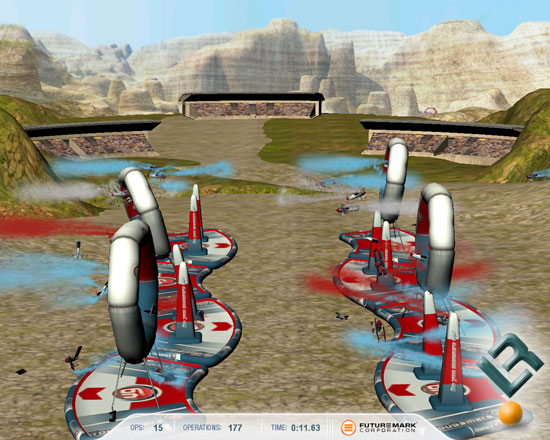
The world of the physics test consists of a large number of airplanes, all trying to fly through a set of air-race gates at the same time. This results in a large number of collisions and breakages. The planes are composed of 12 rigid body pieces, held together by 11 breakable joints. Plane break-up on collision is unscripted, and driven entirely by the physics simulation. The planes are propelled through the air by a set of simulated forces that roughly approximate the combination of propulsion and lift. The planes trail colored smoke, which is simulated using a fluid simulation system available in PhysX. The smoke slowly dissipates over time.
There are two kinds of air race gates in the game world: donut-shaped floating gates and gates composed of two tapered poles. The floating gates represent tough pressurized cloth, and the pole gates represent an elastic, foamy substance. Both gate types are physically simulated using cloth and soft-body simulations available in PhysX.When a PPU is not present, there is one pair of gates in the game world for each CPU core. When a PPU is available, there will be one pair of gates in the game world for each CPU core, minus one, and four additional pairs of gates to be simulated on the PPU. Example configurations are as follows:

Each gate pair is simulated in its own physical world, independent of the others. The worlds are essentially identical, and each contains its own population of airplanes. The worlds do not interact. The worlds assigned to the CPU cores will be simulated entirely on the CPU. The four worlds assigned to the PPU will be simulated on the PPU, except for rigid body simulations, which will run on the CPU. Each world is independent of the others and simulated as fast as possible by the computing device (CPU core or PPU) that it is assigned to. The worlds are not synchronized in time, and so different devices can simulate their assigned worlds at different speeds. This simplification in the parallelization model will mitigate performance bottlenecks where either the CPU or the PPU would have to wait for the other to finish work.
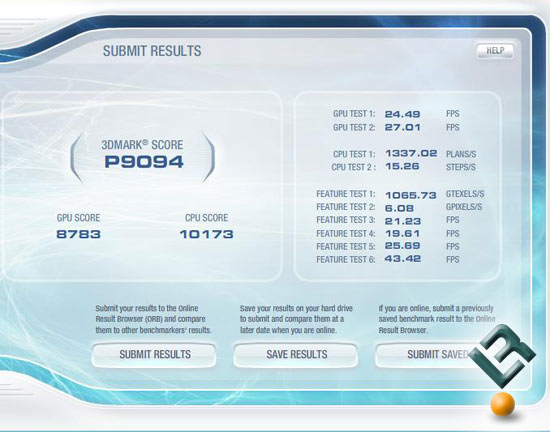
The test result is measured in operations per second (ops), where one physics simulation step of one physics world counts as one operation. The test is run for a fixed amount of wall-clock time. When we ran the benchmark our test system with the Intel Core 2 Quad Q9300 2.5GHz processor and the XFX GeForce 9800 GX2 was able to score 15.26 operations a second without a PhysX card with four gate pairs. Remember that the overall score was P9094.
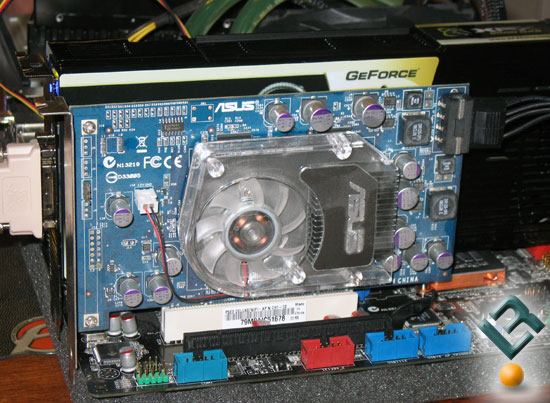
Just for fun we installed the ASUS PhysX PCI card with the latest drivers and gave the benchmark a shot with the PPU enabled.
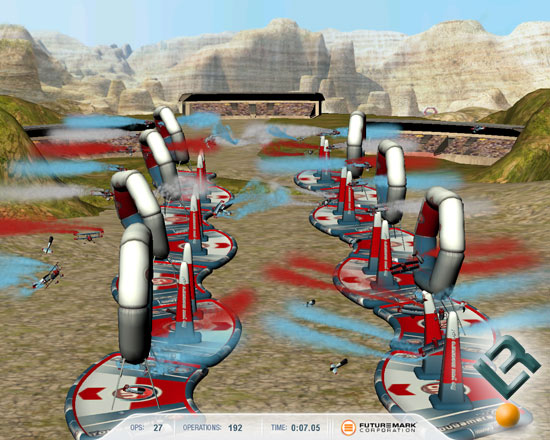
With the AGEIA PhysX card enabled our Intel Q9300 quad-core processor had a total of 7 gate pairs to take care of. This test reminds us of the great Red Bull Air Race as you can see from the screenshot we took while the benchmark was running on our test system.
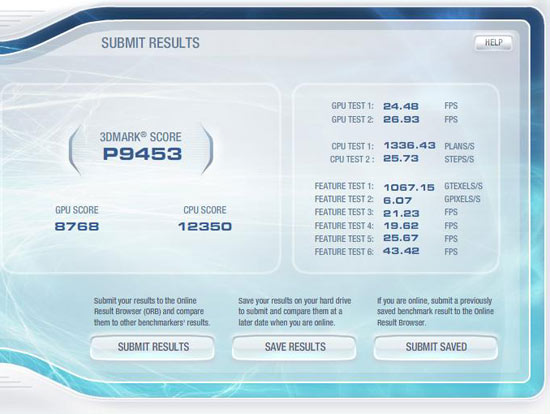
With the ASUS PhysX card installed on the test system the CPU Test 2 score increased to 25.73 operations a second with seven gate pairs. This also boosted the CPU score and the overall 3DMark score as you can see from the image above. The CPU score alone went up by 2177 points or 21.4%. This won’t impact rankings online as the AGEIA PPU must be switched off for the results to be approved as a default result. The ASUS PhysX P1 card retails $149 plus shipping, so it was time to bring it back out on the test bench for some more use!

Comments are closed.